
By Dr John R. Baker
Now the budgerigar breeding season is on us once
again it is an opportune time to list some do’s and don’ts which may assist
getting nore eggs and, in particular, more chicks from the eggs which are
laid.
Budgerigars, as kept by fanciers, produce far fewer
chicks for the number of eggs laid than any other bird kept for exhibition
and recent work undertaken at the University of Liverpool, sponsored by the
Lancashire and Cheshire Budgerigar Society has attempted to shed some light
on this. This article sets out some of the points which have emerged from
this research together with a few results from other people’s work.
DO’S
Hygene
1 – Use clean nest boxes, preferably washed out and
disinfected at the end of the previous breeding season. Dirty boxes can
carry germs which can live for years and these germs can ifect eggs and
chicks with disasterous results. Preferably use cardboard nest boxes which
can be disposed of after use.
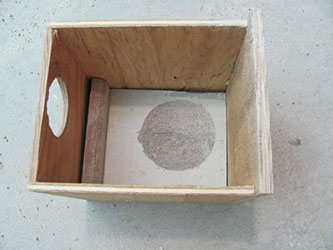
2 – The effect of using a clean nest box is nullified
if the box, concave and bedding, are allowed to become soiled.
Dirty bedding should be replaced as required, once
the full round has been laid most hens will not be too disturbed by this. If
no bedding us used the concave should be washed regularly, particularly once
the chicks start hatching otherwise dirt which accumulates on it can cause
illness and death. The box and all its fittings should be thoroughly washed
and disinfected between rounds if there is a gap between the chicks leaving
the nest and the beginning of the next round. If sawdust or shavings are
used these should be exposed to the air for a few days before being put in
the nest box.
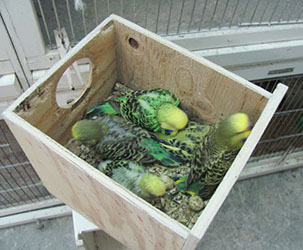
3 – If, in spite of the fanciers best efforts, some
eggs become soiled attempts should be made to clean them otherwise germs
will get into the eggs from this dirt. Eggs can be cleaned by putting them
in water at 40 to 42 degrees centigrade (the temperature is critical, use a
thermometer) then gently wash them with a sponge while using disposable
plastic gloves to hold them.
Having got the hygiene of the breeding environment
right what should be done about prospective parents?
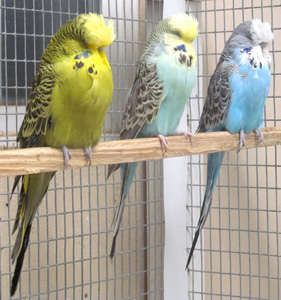
1 – Make sure that the birds are in breeding
condition, there is little point pairing birds not in peak condition.
This is not as easy as it sounds in that one can
usually tell if the hens are fit; more difficulty can be experienced with
the cocks. Well –fed healthy cocks are only fertile for approximately six
months each year for a few weeks at a time. Telling when these fertile
periods are is not easy even with the experienced eye. If required, cocks
can be checked by a veterinary surgeon to see if they are in one of their
fertile periods.
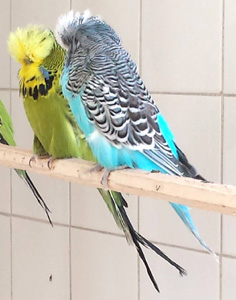
H
2 – Both cocks and hens should, if at all buff, have
the large body contour feathers cut off, as during mating these feathers can
slide over the vent and stop proper pairing.
The feathers should not be plucked because this is
painful and they will also regrow over the breeding period. There is no
truth in the old wives’ tale of the guide feathers which are supposed to
assist the cock in locating the hen’s vent.
3 – Allow the parent birds as much exercise as
possible which means using the biggest breeding cages that your birdroom
will allow. Some recent work from the U.S.A. has demonstrated that, all
other things being equal, the more exercise the birds have the greater will
be the number of eggs which hatch. In the American paper the author got the
best results with birds he forced to fly by chasing them about…. I am not
sure I would recommend this however.
4 – Budgerigars are birds that form quite strong
pair-bonds and if these are “ignored” or not broken the number of eggs
produced can be low. Ideally hens and cocks should be kept separate when not
being used for breeding and preferably out of earshot as the pair-bond can
be maintained by the birds’ calls.
Provided that a balanced diet is fed – preferably a
commercial one such as Trill, there is no need for many of the fancy diets
fed. If you want to make up your own feed use a good quality mixed canary
and millet, with a protein supplement, and a proprietary vitamin and mineral
mix. There can be problems in hard water areas, in as much as birds given
this to drink can produce eggs with thick shells and sometimes chicks will
have difficulty hatching from these, so that bottles water or boiled water
is preferable during the breeding season.
Finally 5 – Do keep records, not only of the number
of chicks which hatch but also if a particular pair does not produce chicks,
or if failure to hatch is due to clear eggs or dead-in-shells. This will
help not only in identifying infertile birds, but also indicate where
problems may be so that if advice is sought (as it should be if the breeding
season does not come up to expectations) these records will be available to
help amend the situation.
DON’TS
Many Don’ts are the opposite of the Do’s but there
are a few specific things which should be avoided.
1 – Budgerigars will breed over a wide range of
temperatures, in fact apart from the comfort of the fancier and to stop the
water in the drinkers freezing, there is probably no need to provide heat in
the Winter. What the birds will not tolerate is wide temperature
fluctuations; birds kept in green-house type buildings which get very hot by
day and very cold by night will not breed satisfactorily.
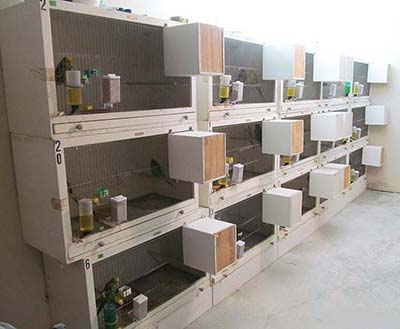
2 – Do not handle eggs. Many fanciers handle eggs
frequently and when asked why few are able to give good reasons. The main
reason why eggs should not be handled is that germs, which all fanciers have
on their skin however much it is washed, can get onto the egg and cause
dead-in-shell. If you feel you must handle the eggs or if you need to keep
the nest box clean, use cheap disposable plastic gloves or the special egg
handling forceps. To see if eggs are clear they can be examined in the nest
with one of the Laser torches produced for the purpose.
3 – Fanciers often mark eggs (which also involves
handling the eggs). If you feel the need to do this use a soft pencil rather
than a water or spirit based marker so there is no residue that can
penetrate the egg shell.
4 – Handling and marking eggs does disturb some hens
which may lead to chilling of eggs, and if done frequently can lead to eggs
drying out which results in chicks drying or not being able to hatch or the
hatching of weak chicks.
5 – Some fanciers like to increase the humidity in
nest boxes. If this is done one should use moistened peat or sponges under
the bedding or concave. The bedding itself should not be moistened (except
perhaps just before the eggs hatch) as it can stop eggs hatching by stopping
or slowing the evaporation of water through the shell. This has to take
place as eggs have to lose a fixed amount of water during incubation, if too
little or too much is lost problems result.
![]() Check
out the articles in our Reference Library
Check
out the articles in our Reference Library
